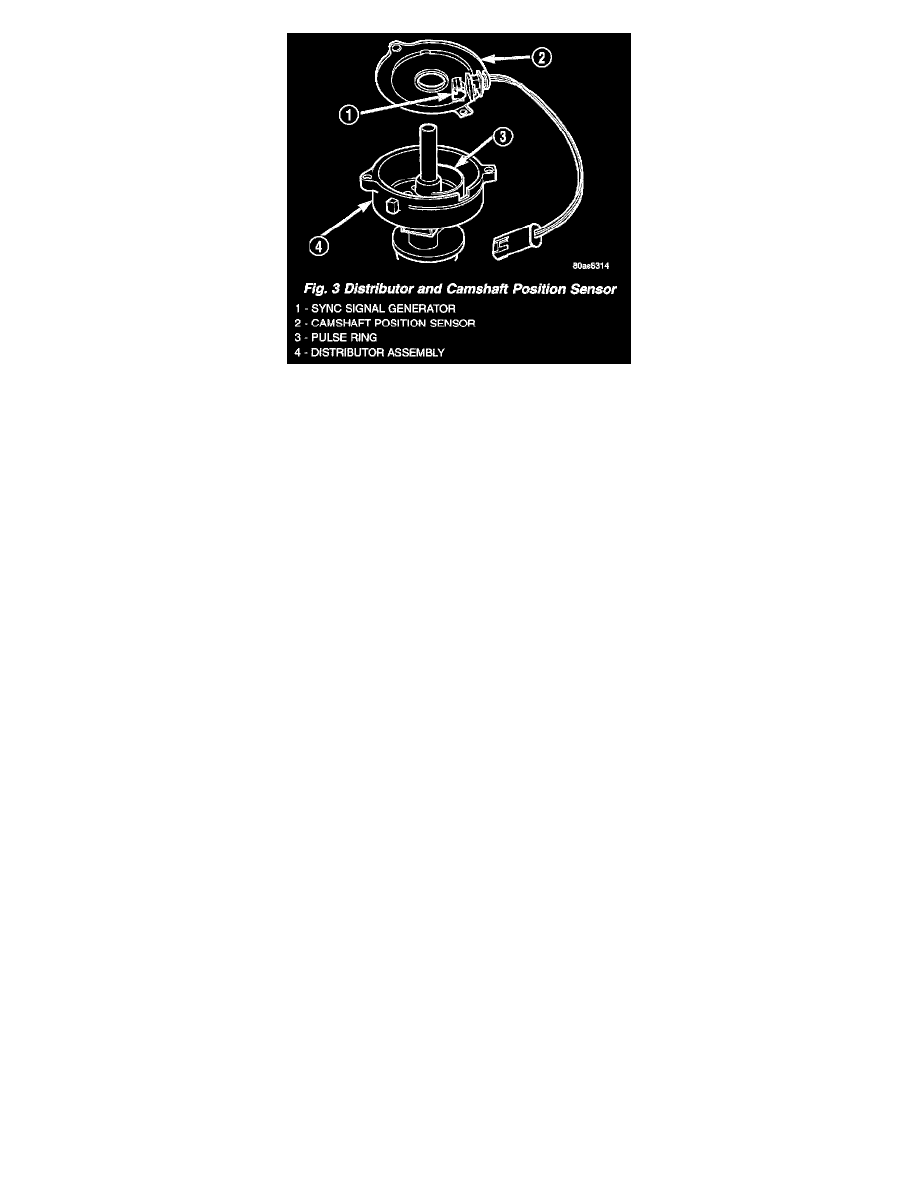RAM 1500 Van V8-5.9L VIN Z LDC (2001)

Fig. 3 Distributor And Camshaft Position Sensor
DISTRIBUTOR
All 3.9/5.2/5.9L engines are equipped with a camshaft driven mechanical distributor containing a shaft driven distributor rotor. All distributors are
equipped with an internal camshaft position (fuel sync) sensor.
The camshaft position sensor provides fuel injection synchronization and cylinder identification.
The distributor does not have built in centrifugal or vacuum assisted advance. Base ignition timing and all timing advance is controlled by the
Power- train Control Module (PCM). Because ignition timing is controlled by the PCM, base ignition timing is not adjustable.
The distributor is held to the engine in the conventional method using a holddown clamp and bolt.
Although the distributor can be rotated, it Will have no effect on ignition timing.
All distributors contain an internal oil seal that prevents oil from entering the distributor housing. The seal is not serviceable.
IGNITION COIL
A single ignition coil is used. The coil is not oil filled. The coil windings are embedded in an epoxy compound. This provides heat and vibration
resistance that allows the coil to be mounted on the engine.
The Powertrain Control Module (PCM) opens and closes the ignition coil ground circuit for ignition coil operation.
Battery voltage is supplied to the ignition coil positive terminal from the ASD relay. If the PCM does not see a signal from the crankshaft and
camshaft sensors (indicating the ignition key is ON but the engine is not running), it will shut down the ASD circuit.
Base ignition timing is not adjustable on any engine. By controlling the coil ground circuit, the PCM is able to set the base timing and adjust the
ignition timing advance. This is done to meet changing engine operating conditions.
SPARK PLUG
Resistor type spark plugs are used.
Spark plug resistance values range from 6,000 to 20,000 ohms (when checked with at least a 1000 volt spark plug tester). Do not use an ohmmeter
to check the resistance values of the spark plugs. Inaccurate readings will result.
To prevent possible pre-ignition and/or mechanical engine damage, the correct type/heat range/number spark plug must be used.
Always use the recommended torque when tightening spark plugs. Incorrect torque can distort the spark plug and change plug gap. It can also pull
the plug threads and do possible damage to both the spark plug and the cylinder head.
Remove the spark plugs and examine them for burned electrodes and fouled, cracked or broken porcelain insulators. Keep plugs arranged in the
order in which they were removed from the engine. A single plug displaying an abnormal condition indicates that a problem exists in the
corresponding cylinder.
Spark plugs that have low mileage may be cleaned and reused if not otherwise defective, carbon or oil fouled. Also refer to Spark Plug Conditions.
